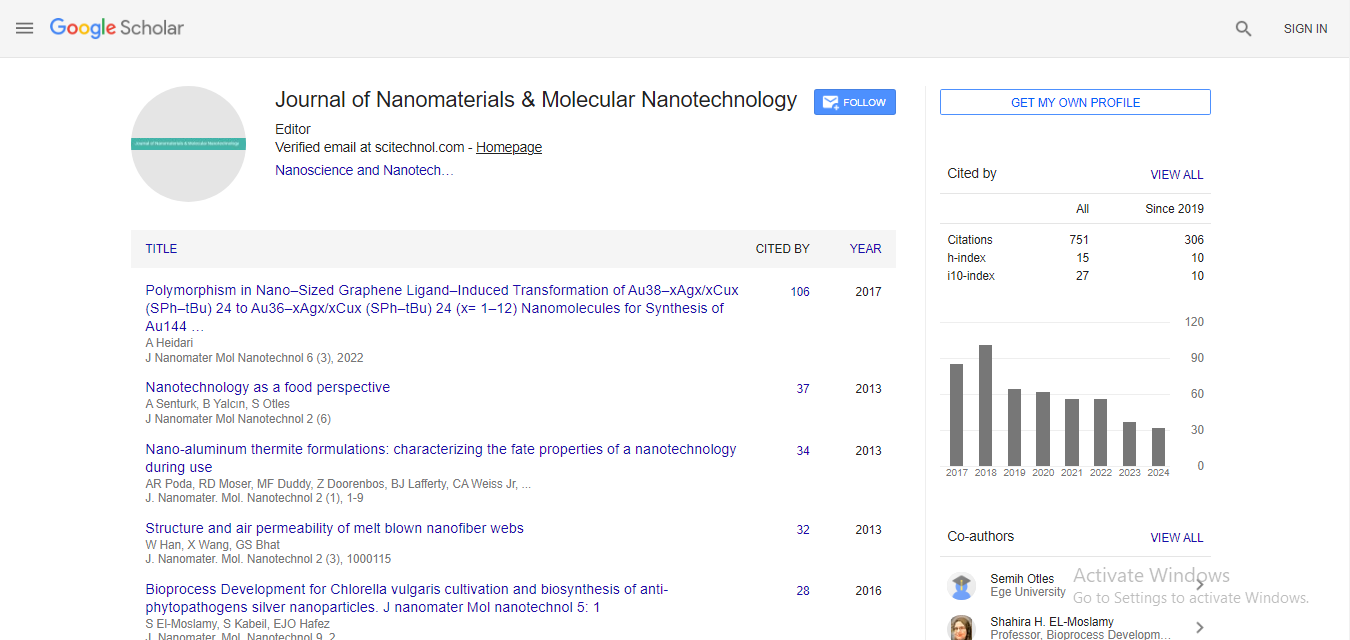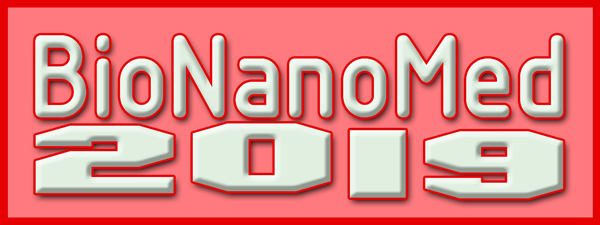The study on electronic properties in transition metal dichalcogenides induced by chemical doping
Karen Alejandra Vega Bustos
Universidad de los Andes, Colombia
: J Nanomater Mol Nanotechnol
Abstract
The search for new and better multiferroic materials is motivated by the possibilities they offer in tuning magnetic properties of devices, such as, for example, magnetic memories, by the application of an electric field; or, vice versa, the control of electric polarization by magnetic fields [1]. These materials are currently used in multiple applications such as FeFET ferroelectric transistors, FeRAM and MRAM memories, among others. Most of the multiferroic materials available nowadays are highly 3 dimensional, which imply high costs and limitations on their miniaturization down to the nanoscale [2]. In this sense, the van der Waals (vdW) low-dimensional materials for which either ferromagnetic (FM) or ferroelectric (FE) properties have been predicted and observed under certain conditions rise as promising candidates in the search for multiferroic materials that can be nanostructured at a low cost [2]][3][4]. In this work, we present our recent results on the study on multiferroic properties in transition metal dichalcogenides induced by chemical doping. We show piezo force microscopy (PFM) measurements, as well as magnetization curves as a function of magnetic field, in single crystals of the doped compounds. These measurements reveal simultaneous ferroelectricity and ferromagnetism in the bulk, at room temperature. These results pave the way for the incorporation of nanostructured TMDs into multiferroic devices.
References:
1. M. Wu, “Two-Dimensional van der Waals Ferroelectrics: Scientific and Technological Opportunities,” ACS Nano, vol. 15, no. 6, pp. 9229–9237, 2021, doi: 10.1021/acsnano.0c08483.
2. Y. Lu, R. Fei, X. Lu, L. Zhu, L. Wang, and L. Yang, “Artificial Multiferroics and Enhanced Magnetoelectric Effect in van der Waals Heterostructures,” ACS Appl. Mater. Interfaces, vol. 12, no. 5, pp. 6243–6249, 2020, doi: 10.1021/acsami.9b19320.
3. H. J. Jin, W. Y. Yoon, and W. Jo, “Virtual Out-of-Plane Piezoelectric Response in MoS2 Layers Controlled by Ferroelectric Polarization,” ACS Appl. Mater. Interfaces, vol. 10, no. 1, pp. 1334–1339, 2018, doi: 10.1021/acsami.7b14001.
4. E. Bruyer, D. Di Sante, P. Barone, A. Stroppa, M. H. Whangbo, and S. Picozzi, “Possibility of combining ferroelectricity and Rashba-like spin splitting in monolayers of the 1T -type transitionmetal dichalcogenides MX2(M= Mo, W;X= S, Se, Te),” Phys. Rev. B, vol. 94, no. 19, pp. 1–6, 2016, doi: 10.1103/PhysRevB.94.195402.
5. K. Kang, S. Chen, and E.-H. Yang, Synthesis of transition metal dichalcogenides. INC, 2020.
6. A. Castellanos-Gomez, “Why all the fuss about 2D semiconductors?,” Nature Photonics, vol. 10, no. 4. Nature Publishing Group, pp. 202–204, Apr. 01, 2016, doi: 10.1038/nphoton.2016.53.
Biography
He is affiliated to Universidad de los Andes, Colombia. His international experience includes various programs, contributions and participation in different countries for diverse fields of study. His research interests reflect in his wide range of publications in various national and international journals.
 Spanish
Spanish  Chinese
Chinese  Russian
Russian  German
German  French
French  Japanese
Japanese  Portuguese
Portuguese  Hindi
Hindi 



